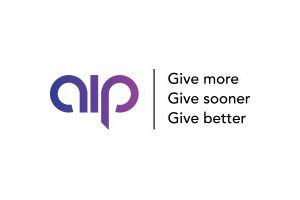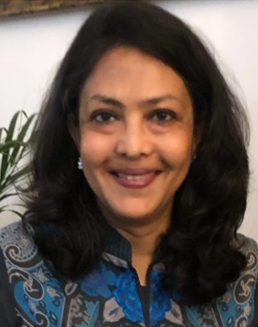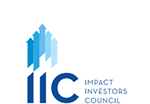|
Ecosystem Player Showcase
Dialogue with Radhika Jain, Philanthropic Partner,
Accelerate Indian Philanthropy
|
|

1
What was the strategic intent behind the start of Accelerate India Philanthropy? How do you envision leveraging an integrated philanthropic network to enhance the scale and effectiveness of charitable impact over the next decade?
|
The Strategic Intent Behind Accelerate Indian Philanthropy (AIP): AIP was born from the recognition that India’s ultra-high-net-worth individuals (UHNIs) possess immense potential to drive transformative change, yet their philanthropic contributions as a percentage of net worth remain modest compared to global benchmarks.
Hence, AIP was established with the mission to build a vibrant network by and for philanthropists, and to inspire, influence, and inform strategic giving. The organization engages with UHNIs across varying stages of their giving journey, fostering connections, shared learnings and collaboration.
AIP does not attract funds onto our platform for disbursal, we are sector agnostic and provide pro bono support to those who are keen to give more, give sooner, and give better.
Leveraging an Integrated Philanthropic Network:
AIP’s integrated network serves as a vibrant platform for collaboration, learning, and action. By connecting philanthropists with peers, experts, and credible non-profits, we facilitate the exchange of ideas, best practices, and impactful strategies.
Our work is focused around four pillars: building an engaged philanthropic network; developing stacks of knowledge resources; co-creating bespoke giving plans; and thought leadership around ease of giving. These pillars help foster collaboration among philanthropists, share nuanced resources like sector primers, case studies, and reports, and create opportunities for peer learning through convenings, panel discussions, and workshops. Our Philanthropy Partners spread across Delhi, Mumbai, and Bangalore, are also committed to engaging with philanthropists 1:1 on their giving plans that align with their personal motivation, values and philanthropic goals.
|
2 How does the Indian philanthropy landscape compare globally? What unique opportunities or challenges does India present?
|
Global comparison: Traditional giving rooted in religious and cultural concepts of charity and 'seva' (service) has shaped much of Indian philanthropy, often manifesting in informal, local, community-based giving. With total donations estimated at a whopping $102.4 billion, the late Jamsetji Tata was listed as the world’s biggest philanthropist of the last century, as per the 2021 EdelGive Hurun Philanthropists of the Century report, ahead of global philanthropists like Bill Gates, Warren Buffett and George Soros.
Since the early 2000’s the scale of India's wealth creation led to the advent of modern India philanthropy led by tech titans Azim Premji, Shiv Nadar and Infosys co-founders like Nandan Nilekani. Yet, giving as percentage of net worth is lower compared to that of the US, the UK, and even China.
While philanthropy in the Global North benefits from established structures—private foundations, donor-advised funds, and tax incentives, Indian philanthropy is developing its own models that blend traditional giving with modern approaches. The Indian model often emphasizes direct operational involvement rather than pure grant-making, with many philanthropists taking an active role in their initiatives. This contrasts with the Western model of establishing large endowments and focusing on grant-making.
Unique opportunities: India's philanthropic landscape is one of the most dynamic in the world, influenced by its cultural traditions, socio-economic disparities, and a rapidly evolving economy. While India demonstrates a robust spirit of giving rooted in cultural and religious values, it also presents distinct opportunities that shape its role in global philanthropy.
- Growing Wealth: The rapid increase in Ultra High Net Worth Individuals (UHNIs) in India creates potential for significant philanthropic capital.
- Scale of Need: India's large population and development challenges present opportunities for catalytic philanthropic impact at scale across all sectors.
- Tech-Driven Philanthropy: The rise of Indian tech entrepreneurs has brought innovative solutions such as digital public goods into philanthropy, with a focus on scalable and impact-driven initiatives.
- Community-driven Solutions: India's diverse social fabric enables philanthropists to support community led and driven solutions tailored to region-specific challenges.
|
3
Many Indian philanthropists cite regulatory hurdles and a lack of accessible resources as barriers to effective giving. How does AIP help philanthropists navigate these structural and personal challenges to unlock more impactful contributions?
|
One of the major barriers to philanthropy is structural. As per the AIP-BCG Wealth with Purpose report based on interviews with 100 UHNIs, over 60% of our respondents’ identified challenges like navigating the complex regulatory landscape, lack of accessible resources to inform decision-making, and difficulty forming trust-based relationships with nonprofit partners. A second key barrier is personal, with over 30% of our study respondents citing lack of motivation and expressing hesitation over the role of personal philanthropy, in addition to other forms of contribution like CSR. Cultural factors also play a role, with many UHNIs preferring to preserve wealth for future generations, and fewer incentives to openly discuss philanthropy within their social circles.
We support our network members with resources curated to navigate philanthropic barriers.
Our knowledge work addresses structural barriers through resources like sectoral insights, case studies, and thematic workshops that inform and inspire philanthropists.
Each philanthropist’s journey is unique, and we recognise and respect that as we partner with individuals to help identify causes that align with their values, connect with credible non-profits, and design structured giving strategies that ensure sustainable outcomes.
By fostering a network of like-minded philanthropists, AIP provides a platform for peer learning and collective problem-solving. Through workshops, convenings, and dialogues, philanthropists gain knowledge and get inspired from shared experiences and insights.
|
4
While education and healthcare receive the majority of philanthropic funding in India, sectors like mental health, environmental sustainability, and gender equality remain underfunded. How does AIP address these disparities and inspire donors to explore these critical areas?
|
Our Wealth with Purpose report aligns with other studies that show that Education and Healthcare attract the most funding (over 70 and 50 per cent, respectively), as they are perceived as basic universal needs with far-reaching impact. At the same time, we’re seeing a growing interest in sectors like Gender Equality and Environment Sustainability, the latter being increasingly recognised as an existential challenge, motivating many to contribute to address not just its immediate effects, but a fundamental, long-term problem. Some philanthropists are also drawn to niche causes like Mental Health and Art & Culture with the aim of generating a return.
We believe that philanthropy has the potential to drive transformative change across all sectors, Ours is a sector-agnostic approach given that philanthropy is deeply personal, and individuals should engage with causes that resonate with them. Having said that, we do advocate giving better, as we believe that personal philanthropy can play a role that governments and private sector are constrained with, including underfunded areas both in terms of sectors and regions.
AIP encourages philanthropists to think beyond immediate outcomes and explore how their giving can address root causes. For instance, environmental sustainability intersects with health, livelihoods, and climate resilience, making it a catalytic area for systemic impact.
|
5 Collaboration is often cited as key to achieving systemic impact, but some philanthropists are hesitant to join collective initiatives. Can you share specific examples where AIP facilitated successful collaborations, and what lessons were learned in scaling such efforts?
|
We recognize that addressing complex challenges requires collective action. Collaboration leverages diverse expertise, resources, and networks to amplify impact.
While collaboration isn’t always the first instinct for every philanthropist, some of whom prefer maintaining control over their giving through their own vehicles, more and more givers are recognizing the value of working together to create broader, more sustainable impact.
AIP plays a vital role in facilitating these partnerships, offering a platform where philanthropists can meet, share ideas, and explore opportunities to collaborate. Our network of deeply committed philanthropists–including our Founders and Core Founders–also extends to a vast range of mission-driven nonprofit organizations and subject matter experts, enabling insightful exchanges amongst diverse stakeholders.
Lessons Learnt
- Build Trust Gradually: Structured learning journeys and peer interactions help overcome hesitation and establish trust.
- Define Shared Goals: Successful collaborations start with clear, aligned objectives that appeal to all stakeholders.
- Leverage Diverse Strengths: Partners bring different expertise, networks, and resources, making collective efforts more impactful than individual initiatives.
- Create Convening Platforms: Regular dialogues among stakeholders foster a sense of community, strengthening commitment to collaborative goals.
By facilitating collaborations that drive systemic change, AIP demonstrates how philanthropy can shift from individual silos to collective impact.
|
6
As India faces evolving challenges, how can philanthropy shift from traditional grant-making to becoming a driver of innovation and long-term societal change? What role does AIP envision for technology and data-driven decision-making in this transformation?
|
Philanthropy in India must evolve from traditional grant-making to a more strategic approach that drives innovation and systemic impact. To address complex, interconnected challenges, philanthropy needs to fund scalable solutions, invest in capacity building, and champion new ideas that can disrupt the status quo.
We envision this shift in three key ways:
- Prioritizing Systemic Change: Philanthropy must move beyond treating symptoms to addressing root causes. This involves funding cross-sector collaborations, advocating for policy reform, and creating solutions that tackle foundational challenges such as climate resilience, inequality, and mental health.
- Funding Beyond Programs: Philanthropy must focus on building institutional capacity and enabling non-profits to innovate. This includes supporting leadership development, technology adoption, and research that fuels long-term impact.
- Fostering Risk-Taking: Unlike governments (sarkar) or markets (bazar), philanthropy has the flexibility to take bold risks and fund experimental approaches that can create replicable models for change. By investing in pilot projects and testing innovative solutions, philanthropy can pave the way for larger systemic interventions.
Role of Tech & Data
Technology and data are central to transforming philanthropy into a driver of long-term societal change. We promote their integration in the following ways:
- Data-Driven Decision-Making: By leveraging robust data and analytics, philanthropists can identify high-impact opportunities, measure outcomes, and refine their strategies for maximum efficiency.
- Open-Source Platforms: Technology can democratize knowledge and facilitate collaborations through shared platforms, enabling faster, broader access to best practices, case studies, and scalable models.
- Monitoring and Evaluation (M&E): Advanced tools can track impact in real time, offering deeper insights into what works and what needs recalibration.
Through these innovations, philanthropy can shift from transactional giving to transformative action, positioning itself as a critical force in building an equitable and sustainable future for India.
|
7 What, according to you, is the most efficient way to encourage Indian UNHIs/HNIs to “give more, give sooner and give better”, as per your mission statement? What strategies have proven most effective in encouraging early and sustained giving, particularly among younger wealth creators?
|
We need to make philanthropy a movement and for it to be aspirational, through government and public recognition of impactful philanthropic efforts. Our endeavor is to build surround sound around philanthropy’s transformative potential, fostering a sense of urgency to engage philanthropically to solve for critical developmental and economic challenges.
We were encouraged to find that 80% of respondents from our Wealth with Purpose study who emphasized starting philanthropy early belong to the younger generation of wealth creators. Significant influences are:
- Peer Influence and Storytelling: Seeing peers champion philanthropy is highly motivating. We leverage our network of philanthropists to share authentic narratives of impact. Convenings, podcasts, and case studies featuring early givers who have achieved measurable outcomes encourage others to follow suit.
- Demystifying philanthropy: For many, the inertia to give stems from not knowing where to start. Our research reports, sector primers, and thematic workshops demystify complex social issues, highlighting actionable pathways to make a difference. By partnering with individuals on their philanthropic journey over the long term, we help them make informed decisions.
- Building Urgency: We emphasize the value of early giving by highlighting how starting sooner allows philanthropists to compound their impact over time, much like compounding in financial investments. We encourage younger philanthropists to embrace this principle for longer-term societal change.
|
|
|
Radhika Jain, Philanthropic Partner, Accelerate Indian Philanthropy
Radhika Jain, Philanthropic Partner at AIP, has been with AIP since its inception, bringing over 20 years of consulting experience with firms like EY, PwC and Grant Thornton. She has led client engagements in regulatory and tax matters, M&A, cross border investments.
A chartered accountant with a LLB degree, Radhika’s skills include stakeholder engagement, leading cross functional teams, developing new practice areas, thought leadership, business development and project management.
About AIP
AIP is a not-for-profit organisation (NPO) set up with a vision to see strategic philanthropy impact India’s transformation. Supported by our experienced team, AIP’s dynamic network of philanthropists inspire, influence and inform each other, leveraging AIP’s well-curated knowledge resources, network of NPOs and experts, to give more, sooner and better. AIP is neither a grant-maker nor a fundraiser and does not route any philanthropic funds through itself. It takes a sector and organisation-agnostic stance, guided by individual philanthropists’ perspectives and passions to curate convenings, workshops and insightful knowledge stacks (such as philanthropic case studies, sectoral primers, NPO repository and research studies).
AIP is supported by its Core Founders and Founders who are some of India’s leading philanthropists and who have come together to promote the cause of meaningful and impactful personal philanthropy in India.
|
|
About Impact Investors Council:
Impact Investors Council, India (IIC) is a member-based national industry body formed with an
objective to build and strengthen the impact investing eco-system in India. To know more about our work visit https://iiic.in or reach out to secretariat@iiic.in
|
Disclaimer: Data and Information in this newsletter is made available in good faith with the exclusive intention of helping market and ecosystem players, policymakers and the public build a greater
understanding of the Indian impact investing market. The data is collated from sources believed to be reliable and accurate at the time of publication. Readers are urged to exercise independent judgment and diligence in the
usage of this information for any investment decisions
Some of the information provided in this newsletter is supplied by third parties. It is important that all users understand that third party information is not an endorsement of any nature and has been put together with the
sole purpose of benefiting stakeholders.
|
| Unsubscribe |
|
|
|


